Pronator Quadratus Muscle
Table of Contents
Description
The pronator quadratus muscle is a deep muscle located in the forearm, on the anterior aspect of the distal forearm bones. It is a square-shaped muscle that originates from the anterior surface of the distal quarter of the ulna bone (the medial bone of the forearm) and inserts onto the anterior surface of the distal quarter of the radius bone (the lateral bone of the forearm).
The pronator quadratus muscle is accountable for pronating the forearm, which means it rotates the palm of the hand inwardly, so it faces downwards. It works in conjunction with other muscles in the forearm to allow for fine control of hand and wrist movements.
The pronator quadratus muscle is essential in activities that require forearm rotation, such as using a screwdriver, opening a jar, or using a hand drill. It is also used in sports that involve gripping, such as tennis, golf, and rock climbing. Injuries to the pronator quadratus muscle can result in weakness or pain in forearm rotation and may require medical attention.
structure of pronator quadratus muscle
The pronator quadratus muscle is a flat and quadrilateral muscle located in the distal forearm, deep into the superficial forearm muscles. It has a broad origin and insertion, and a thin middle part.
Origin:
- The pronator quadratus muscle originates from the anterior surface of the distal quarter of the ulna, just below the articular disc of the distal radioulnar joint.
Insertion:
- The muscle fibers of the pronator quadratus muscle run in a slightly oblique direction and insert onto the anterior surface of the distal quarter of the radius, blending with the fibers of the deep fibers of the flexor pollicis longus and the pronator teres muscles.
Nerve supply
- The pronator quadratus muscle is innervated by the anterior interosseous nerve, which is a branch of the median nerve.
- The anterior interosseous nerve arises from the median nerve at the level of the elbow and runs with the anterior interosseous artery through the interosseous membrane of the forearm, which lies between the radius and ulna bones.
- The nerve supplies the pronator quadratus muscle, as well as other muscles and structures in the forearm, such as the flexor pollicis longus and the radial half of the flexor digitorum profundus.
- The nerve is important for transmitting the electrical impulses that allow the muscle to contract and produce forearm pronation.
Arterial supply
- The pronator quadratus muscle is mainly supplied by the anterior interosseous artery (a branch of the ulnar artery), which runs between the flexor digitorum profundus muscle and the flexor pollicis longus muscle in the forearm.
- The anterior interosseous artery gives off several muscular branches that penetrate the interosseous membrane to supply the pronator quadratus muscle, as well as other muscles of the forearm.
- These branches of the anterior interosseous artery form an extensive network of capillaries that supply the muscle fibers with oxygenated blood and nutrients.
- In addition to the anterior interosseous artery, the pronator quadratus muscle may also receive some blood supply from other nearby arteries, such as the radial and ulnar recurrent arteries, as well as branches of the anterior and posterior interosseous arteries.
- These arteries anastomose (join together) with the anterior interosseous artery to form a rich vascular network that supplies the muscles and other structures in the forearm.
Functions of pronator quadratus muscle
The pronator quadratus muscle is responsible for the following functions:
Forearm pronation:
- The primary function of the pronator quadratus muscle is to pronate the forearm, which means it rotates the palm of the hand inwardly, so it faces downwards. When the muscle contracts, it pulls the radius bone towards the ulna bone, causing the hand and wrist to rotate inwardly.
Stabilization of the distal radioulnar joint:
- The pronator quadratus muscle plays an important role in stabilizing the distal radioulnar joint, which is the joint between the radius and ulna bones at the wrist.
- This joint is critical for the proper functioning of the wrist and hand, and the pronator quadratus muscle helps to prevent excessive movement of the joint during forearm rotation.
Assisting in grip strength:
- The pronator quadratus muscle works in conjunction with other muscles of the forearm to provide grip strength.
- When the muscle contracts, it helps to strengthen the grip by keeping the wrist and hand in a stable position.
Overall, the pronator quadratus muscle is essential for the fine control of hand and wrist movements and is used in a wide range of activities, such as using tools, sports, and daily tasks that require forearm rotation and grip strength.
Associated condition
The pronator quadratus muscle is often associated with the following conditions:
Pronator syndrome:
- This is a type of nerve compression syndrome that occurs when the median nerve in the forearm is compressed by the pronator muscles, including the pronator quadratus muscle.
- This can cause pain, tingling, and numbness in the forearm, wrist, and hand.
Distal radius fracture:
- Fractures of the distal radius bone (the bone on the thumb side of the forearm) may cause pain and weakness in the pronator quadratus muscle.
Carpal tunnel syndrome:
- This is a condition where the median nerve is compressed as it passes through the wrist.
- It can cause pain, numbness, and weakness in the hand and wrist, and may also affect the pronator quadratus muscle.
Tennis elbow:
- Tennis elbow is a common overuse injury that affects the tendons on the outside of the elbow. It can cause pain and weakness in the forearm, which may affect the pronator quadratus muscle.
Radial tunnel syndrome:
- This is another type of nerve compression syndrome that can cause pain and weakness in the forearm and wrist.
- It occurs when the radial nerve is compressed as it passes through the forearm muscles, including the pronator quadratus muscle.
Diagnosis
Diagnosing an injury or condition of the pronator quadratus muscle typically involves a combination of physical examination and imaging studies. Here are some common methods used to diagnose problems with the pronator quadratus muscle:
Physical examination:
- A healthcare provider may perform a physical examination of the forearm, checking for pain, tenderness, and weakness in the affected area.
- They may also test the patient’s ability to rotate the forearm and assess the stability of the distal radioulnar joint.
Imaging studies:
- Imaging studies such as X-rays, MRI scans, and ultrasounds may be used to visualize the pronator quadratus muscle and surrounding structures.
- These studies can help to identify muscle tears, tendon ruptures, and other abnormalities that may be causing symptoms.
Electromyography (EMG):
- EMG is a diagnostic test that counts the electrical activity of muscles and nerves.
- It may be used to assess the function of the pronator quadratus muscle and to identify any nerve damage or dysfunction.
Provocative tests:
- A healthcare provider may perform specific provocative tests to assess the function of the pronator quadratus muscle.
- For example, the resisted pronation test involves asking the patient to resist the examiner’s attempt to rotate their forearm.
- Pain or weakness during this test may indicate a problem with the pronator quadratus muscle.
In general, a healthcare provider will take a comprehensive approach to diagnose problems with the pronator quadratus muscle, taking into account the patient’s medical history, symptoms, and physical examination findings, along with any relevant imaging or diagnostic tests.
Differential diagnosis
There are several conditions and injuries that can affect the pronator quadratus muscle, and a healthcare provider will need to consider a range of possible diagnoses when evaluating a patient with forearm pain or dysfunction. Here are some common differential diagnoses of the pronator quadratus muscle:
Pronator syndrome:
- Pronator syndrome is a type of nerve compression syndrome that can cause pain and weakness in the forearm, wrist, and hand.
- It is caused by compression of the median nerve as it passes through the pronator muscle.
Radial head fracture:
- A fracture of the radial head (the top of the radius bone) can cause pain and a limited range of motion in the forearm and may be mistaken for a problem with the pronator quadratus muscle.
Distal radioulnar joint instability:
- Instability or dislocation of the distal radioulnar joint can cause pain and weakness in the forearm and may be associated with dysfunction of the pronator quadratus muscle.
Tendinitis or tendinopathy:
- Inflammation or degeneration of the tendons that attach to the pronator quadratus muscle (such as the flexor tendons) can cause pain and weakness in the forearm.
Muscle strain or tear:
- Straining or tearing of the pronator quadratus muscle itself can cause pain and weakness in the forearm, particularly during movements that require forearm pronation.
Other nerve or muscle conditions:
- Other conditions such as carpal tunnel syndrome, brachial plexus injury, or myopathy can also cause forearm pain and weakness and may need to be considered in the differential diagnosis.
Overall, a healthcare provider will need to carefully evaluate the patient’s symptoms, medical history, and physical examination findings in order to make an accurate diagnosis and develop an appropriate treatment plan.
Treatment
The treatment of a pronator quadratus muscle injury or condition will depend on the underlying cause and severity of the problem. Here are some common treatment options:
Rest and immobilization:
- In cases of mild pronator quadratus muscle strain or tendinitis, rest and immobilization may be sufficient to allow the muscle to heal.
- This may involve avoiding activities that exacerbate the symptoms and using a brace or splint to support the affected area.
Physical therapy:
- Physical therapy may be recommended to help restore strength, flexibility, and range of motion in the forearm.
- This may include exercises to stretch and strengthen the pronator quadratus muscle and other muscles of the forearm, as well as techniques to improve joint mobility and stability.
Medications:
- Nonsteroidal anti-inflammatory drugs (NSAIDs) such as ibuprofen or naproxen may be prescribed to help reduce pain and inflammation in the affected area.
Corticosteroid injections:
- In cases of severe pain or inflammation, a corticosteroid injection may be given directly into the affected area to help reduce swelling and pain.
Surgery:
- In rare cases of severe muscle or tendon damage, surgery may be required to repair or reconstruct the affected area.
In addition to these treatments, it is important to address any underlying factors that may be contributing to the problem, such as overuse or improper technique during sports or other activities. Patients may need to modify their activities or work with a coach or physical therapist to improve their technique and prevent further injury.
Physiotherapy exercise
Here are some physiotherapy exercises that may be recommended for the pronator quadratus muscle:
Pronation/supination exercises:
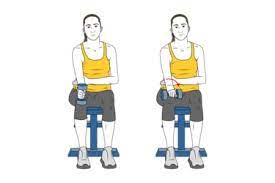
- These exercises involve rotating the forearm between a palm-up (supination) and palm-down(pronation) position.
- This can help to strengthen the pronator quadratus muscle as well as other muscles of the forearm.
Wrist curls:
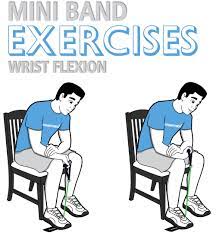
- Wrist curls involve holding a weight (such as a dumbbell) and moving the wrist up and down,
- which can help to strengthen the flexor and extensor muscles of the forearm.
Forearm twists:
- Forearm twists involve holding a weight and rotating the wrist back and forth, which can help to improve grip strength and forearm stability.
Finger extensions:
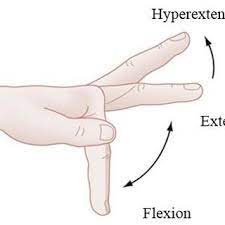
- Finger extensions involve using a rubber band or other resistance tool to stretch the fingers out, which can help to strengthen the extensor muscles of the forearm.
Eccentric pronator quadratus exercise:
- Eccentric exercises involve controlling the lengthening of a muscle as it resists a force.
- For the pronator quadratus muscle, this can involve using a resistance band or weight to slowly lower the forearm from a pronated to a supinated position, while maintaining control and stability in the wrist and forearm.
It is important to work with a qualified physical therapist to develop a personalized exercise program that takes into account the patient’s individual needs and goals. In addition to these exercises, the therapist may also use other techniques such as manual therapy, ultrasound, or electrical stimulation to help improve muscle strength, flexibility, and function.
Strengthening exercise
Here is an example of a strengthening exercise for the pronator quadratus muscle:
Pronation/supination with resistance band:
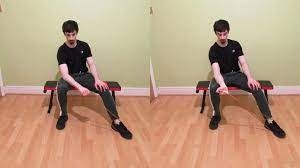
- Start by attaching a resistance band to a stationary object such as a doorknob or anchor point.
- Hold the other end of the band with your palm facing down and your elbow bent at a 90-degree angle.
- Slowly rotate your forearm and wrist to bring your palm facing up, keeping your elbow stationary.
- Hold this position for a few seconds, then slowly return to the starting position with your palm facing down.
- Repeat for 10 to 15 repetitions, then change to the other arm.
Wrist curls with dumbbell:
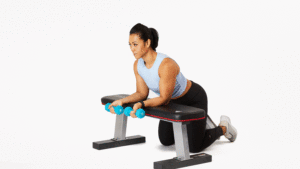
- Hold a dumbbell in your hand with your palm facing up and your elbow resting on a bench or other stable surface.
- Slowly raise the weight by curling your wrist upward, then slowly lower the weight back down.
- Repeat for 10 to 15 repetitions, then change to the other arm.
Forearm twists with resistance band:

- Start by attaching a resistance band to a stationary object.
- Hold the other end of the band with your palm facing down and your elbow bent at a 90-degree angle.
- Rotate your wrist to bring your palm facing up, then rotate back to the starting position with your palm facing down.
- Repeat for 10 to 15 repetitions, then change to the other arm.
Finger extensions with rubber band:
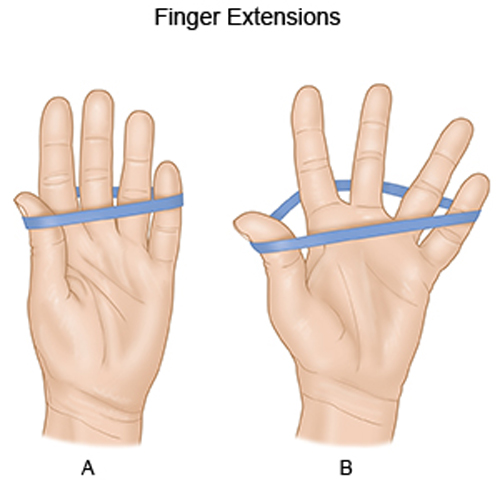
- Hold a rubber band around your fingers and thumb with your palm facing down.
- Slowly extend your fingers to stretch the band, then release back to the starting position. Repeat for several repetitions.
It is important to start with a lightweight or resistance band and gradually increase the weight or resistance as the muscle becomes stronger. Consult with a qualified physical therapist or healthcare provider before beginning any new exercise program, especially if you have a history of forearm or wrist pain or injury.
FAQ
The recovery time for pronator quadratus muscle pain depends on the severity of the injury
and the individual’s healing ability. Mild condition may recover within a few days, while more severe
conditions may take several weeks to several months to fully heal.
If left untreated, pronator quadratus muscle pain may lead to chronic pain, limited range of
motion, and decreased grip strength. It may also increase the risk of further injury or damage
to the surrounding structures.
Pronator quadratus muscle pain may be related to other medical conditions such as carpal
tunnel syndrome, tennis elbow, golfer’s elbow, or radial tunnel syndrome. It is important to
receive a proper diagnosis to ensure the correct treatment approach.
Prevention of pronator quadratus muscle pain includes maintaining good posture, taking
frequent breaks during repetitive tasks, using the proper technique during sports or other
activities, and stretching before and after physical activity.
Massage therapy may be helpful in relieving pronator quadratus muscle pain by reducing
muscle tension, improving circulation, and promoting relaxation. It is important to seek a
qualified massage therapist with experience in treating forearm and wrist injuries.

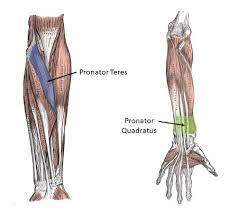
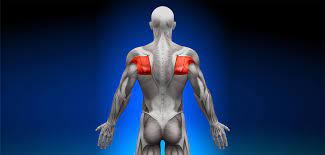
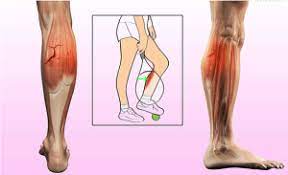
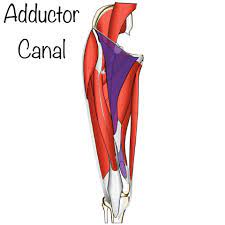

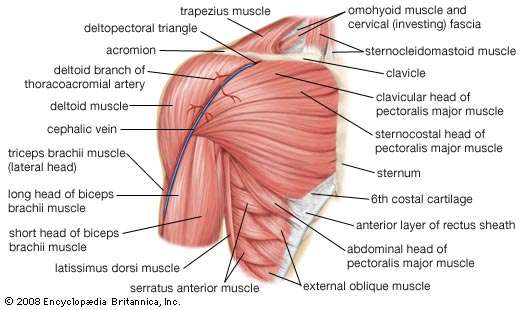
One Comment